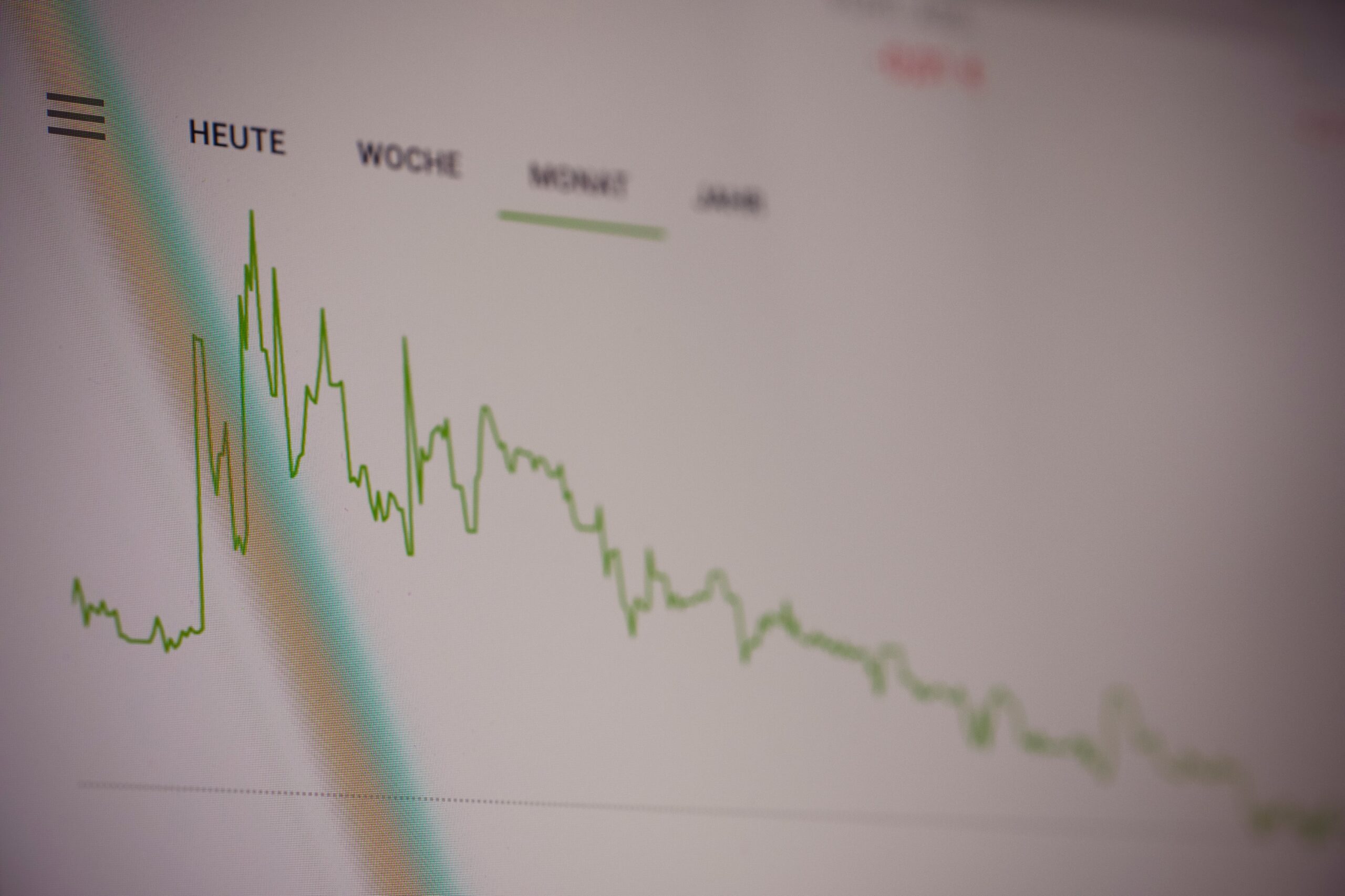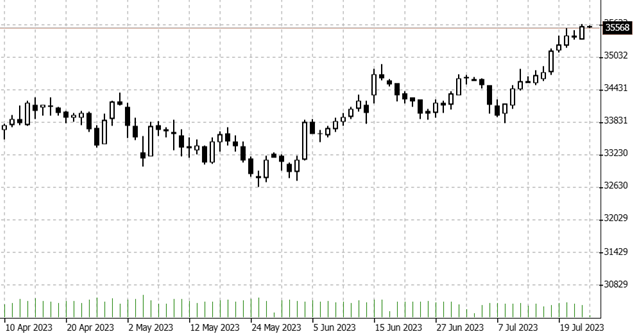

25.07.2023 – Tomorrow, Wednesday, the Federal Reserve will again have its say. Apparently, the U.S. central bank has succeeded in containing inflation without choking off the economy. At any rate, optimism is growing about a “soft landing.” And about the fact that the cycle of interest rate hikes is coming to an end.
The stock market has already celebrated moderately: the Dow Jones – shown here in a daily chart – has just closed higher than it has in around fifteen months.

Source: Bernstein Bank GmbH
Currently, the federal funds rate is between 5.00 to 5.25 percent. Currently, according to the CME Fedwatch Tool, 98.9 percent of the market believes rates will rise to the 5.25 to 5.50 percent range tomorrow. You can imagine the swings if the Fed fails to meet this solidified expectation. A new rate move would be the 11th since March 2022 – and the highest interest rate in 22 years.
Economists surveyed by “Bankrate.com” see a peak in the key interest rate of 5.5 to 5.75 percent. Accordingly, 37 percent of the experts believe in another interest rate step and 33 percent even in two further rate hikes. The always well-informed “Wall Street Journal” also wrote in this direction: The Fed is not yet ready to declare victory over inflation
Growing optimism
Meanwhile, economists at Goldman Sachs have lowered the possibility of a U.S. recession from 35 to 20 percent. Even the rather pessimistic Deutsche Bank has meanwhile repositioned itself: “We have greater resiliency within the economy than I would have anticipated at this point in time, given the extent of rate increases we’ve gotten,” judged Matthew Luzzetti Chief Economist in the USA. Consumer spending remains high, he said, and many people still have reserves from the government stimulus from the Corona era and are now catching up on things they missed, such as travel, restaurants and entertainment.
Recession versus inflation
Indeed, the labor market also remains robust enough for further interest rate hikes: 209,000 new jobs were created in June, and the unemployment rate fell to 3.6 percent – nearly the lowest level in half a century. Meanwhile, inflation has slipped: from 9.1 percent in June 2022 to 3 percent most recently. The Fed’s target of 2 percent seems close to being reached.
Our conclusion: pay attention to the Fed’s expectations management. Important will again be the choice of words in the press release and in Jerome Powell’s press conference. Presumably, there will be no euphoric undertone – that would whip prices upward. But even the slightest hint that mission tightening is almost accomplished will please the bulls. Conversely, the bears will be served if the Fed is overly cautious about the economy and inflation and hints at an even stronger than expected need for action on interest rates.
It remains to be added that the current reporting season with more than 500 corporations this week also gives a hint about the current economic situation and the scope for interest rates. In this sense: Bernstein Bank wishes successful trades and investments!
__________________________________________________________________________________________________________________________________________________________________________
The content of this publication is for general information purposes only. In this context, it is neither an individual investment recommendation or advice nor an offer to purchase or sell securities or other financial products. The content in question and all the information contained therein do not in any way replace individual investor- or investment-oriented advice. No reliable forecast or indication for the future is possible with respect to any presentation or information on the present or past performance of the relevant underlying assets. All information and data presented in this publication are based on reliable sources. However, Bernstein Bank does not guarantee that the information and data contained in this publication is up-to-date, correct and complete. Securities traded on the financial markets are subject to price fluctuations. A contract for difference (CFD) is also a financial instrument with leverage effect. Against this backdrop, CFD trading involves a high risk up to the point of total loss and may not be suitable for all investors. Therefore, make sure that you have fully understood all the correlating risks. If necessary, ask for independent advice. CFDs are complex instruments and are associated with the high risk of losing money quickly because of the leverage effect. 68% of retail investor accounts lose money trading CFD with this provider. You should consider whether you understand how CFD work and whether you can afford to take the high risk of losing your money.7
